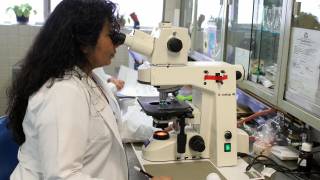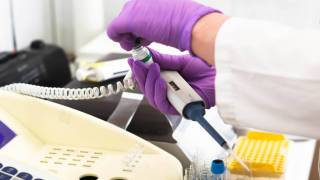AT-Home HPV Tests Significantly Increase Cancer Screening

A new cancer prevention study indicates that mailing human papillomavirus (HPV) kits to underscreened women increased screening uptake when compared with usual care alone, with no significant differences in precancer detection or treatment.
This randomized clinical trial found 26 percent of women were screened after receiving an HPV kit vs 17 percent with usual care, which is a significant difference.
But, there was no statistically significant difference in the number of cases of precancers detected or treated.
This study’s findings are important since more than 50 percent of cervical cancers are diagnosed in underscreened women in the USA.
Additionally, these researchers say ‘these study results support the feasibility of mailing HPV kits to women who are overdue for cancer screening to increase screening uptake in US health care systems.
However, the non-adherence to follow-up was found ‘especially concerning’, said a related editorial.
About 41 percent of the women in this study who had positive test results for HPV-16 or HPV-18 ‘did not adhere to the recommended colposcopy.’
This study was published in the Jama Network on November 5, 2019, and identifies the challenges of increasing cervical cancer screening uptake.
‘Given the barriers to in-clinic screening, the idea of home HPV testing to increase cancer prevention efforts is appealing,’ said these researchers.
Although the intervention did not lead to a statistically significant increase in the primary outcomes of cervical intraepithelial neoplasia grade 2 or worse (CIN2+) detection or treatment, the intervention increased screening uptake and reduced the time to screening uptake.
Of 9,960 women in this study's intervention group, only 12.1 percent returned the kit, which may have been due to several factors, such as:
- Patients were instructed to undergo clinic-based screening regardless of home HPV screening; thus, the motivation to use the kit may have been low.
- Some patients may have been aware that they were not due for screening based on the American Society for Colposcopy and Cervical Pathology guidelines. Kits were mailed to patients slightly more than 3 years after their last screening, and patients older than 30 years with previous negative co-testing would have almost 2 years before their next recommended screening was due.
- Patients may have been wary of home screening given that vaginal HPV testing is not approved by the US Food and Drug Administration for risk stratification in cervical cancer screening.
- Patients may have lacked knowledge regarding the superior sensitivity and negative predictive value of HPV testing.
These researchers concluded saying ‘It is understandable given these factors that the effect of this mailed HPV kit on screening uptake was modest, with an increase of only 8.9 percent over usual care.
Despite an increase in screening uptake, the primary outcome of detected or treated CIN2+ was not significantly different among those who received the HPV kit than among those who underwent usual care reminders.
This may be partly because of the low prevalence of dysplasia in this population.
The study population had low HPV test positivity (12%) compared with more diverse clinic settings and age ranges, in which high-risk HPV may be as prevalent as 35 percent.
This percentage may have been further diminished by the 6-month limitation on the measurement of follow-up for enrolled patients.
‘Overall, this impressive randomized clinical trial demonstrated that the implementation of a home HPV screening program is feasible for large health care systems,’ said an accompanying editorial published by JAMA on November 6, 2019.
‘The strategy especially merits further research in populations with lower resources and higher disease prevalence.’
‘Cervical cancer screening has been one of the most effective cancer tests for saving lives. Cancer of the cervix can be largely prevented with regular screening—usually using Pap (Papanicolaou) tests by clinicians,’ said Diana S.M. Buist, Ph.D., in a related statement.
As of August 2018, the U.S. Preventive Services Task Force (USPSTF) recommendations suggest screening for cervical cancer every 3 years with cervical cytology alone in women aged 21 to 29 years.
For women aged 30 to 65 years, the USPSTF recommends screening every 3 years with cervical cytology alone, every 5 years with high-risk human papillomavirus (hrHPV) testing alone, or every 5 years with hrHPV testing in combination with cytology (co-testing).
‘Of course, home HPV testing can only be part of the solution to cervical cancer prevention and should be implemented in tandem with continued prevention strategies, such as HPV vaccination administration in all populations.’
This editorial was written by Chailee Faythe Moss, MD; Betty Chou, MD; Jenell S. Coleman, MD, MPH.
Study Corresponding Author: Jenell S. Coleman, MD, MPH, Johns Hopkins University, ([email protected]). Conflict of Interest Disclosures: None reported.
The HOME (Home-based Options to Make cervical cancer screening Easy) trial is the initial randomized trial to study mailed HPV test kits in a real-world U.S. health system, Kaiser Permanente Washington.
HPV Cancer news published by Vax Before Cancer
Our Trust Standards: Medical Advisory Committee
- U.S. Preventive Services Task Force A and B Screening Recommendations
- Randomized Trial of In-Home Cervical Cancer Screening in Underscreened Women
- Effect of Mailed Human Papillomavirus Test Kits vs Usual Care Reminders on Cervical Cancer Screening Uptake, Precancer Detection
- Home Screening for Human Papillomavirus Falls Short in Initial Application, Remains Promising
- Mailing home HPV tests may provide alternative to Pap screening

























